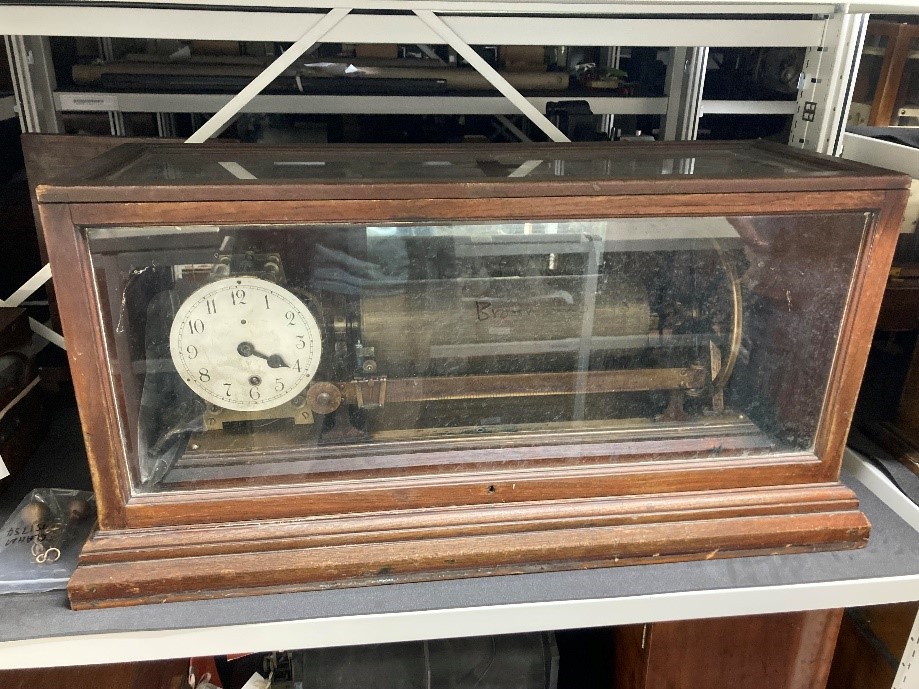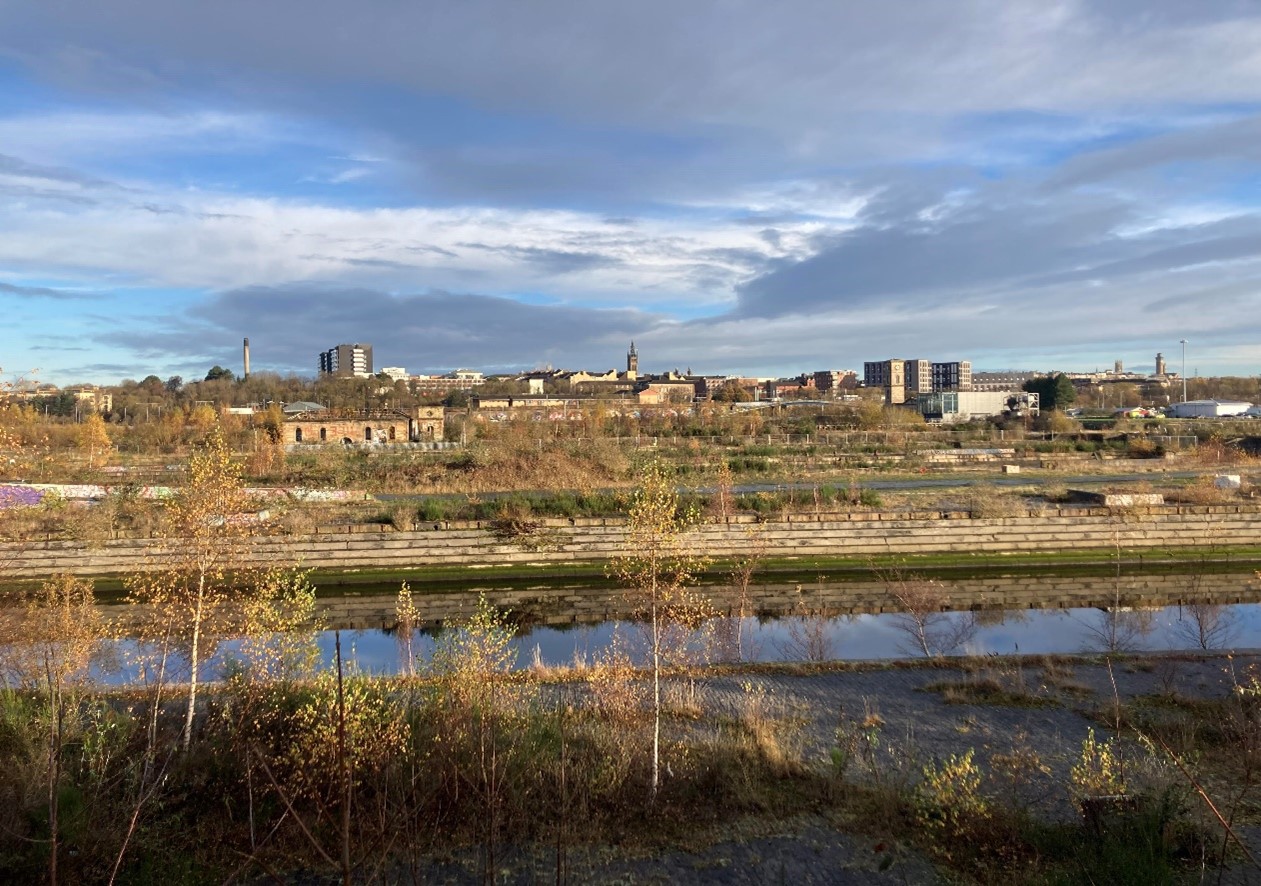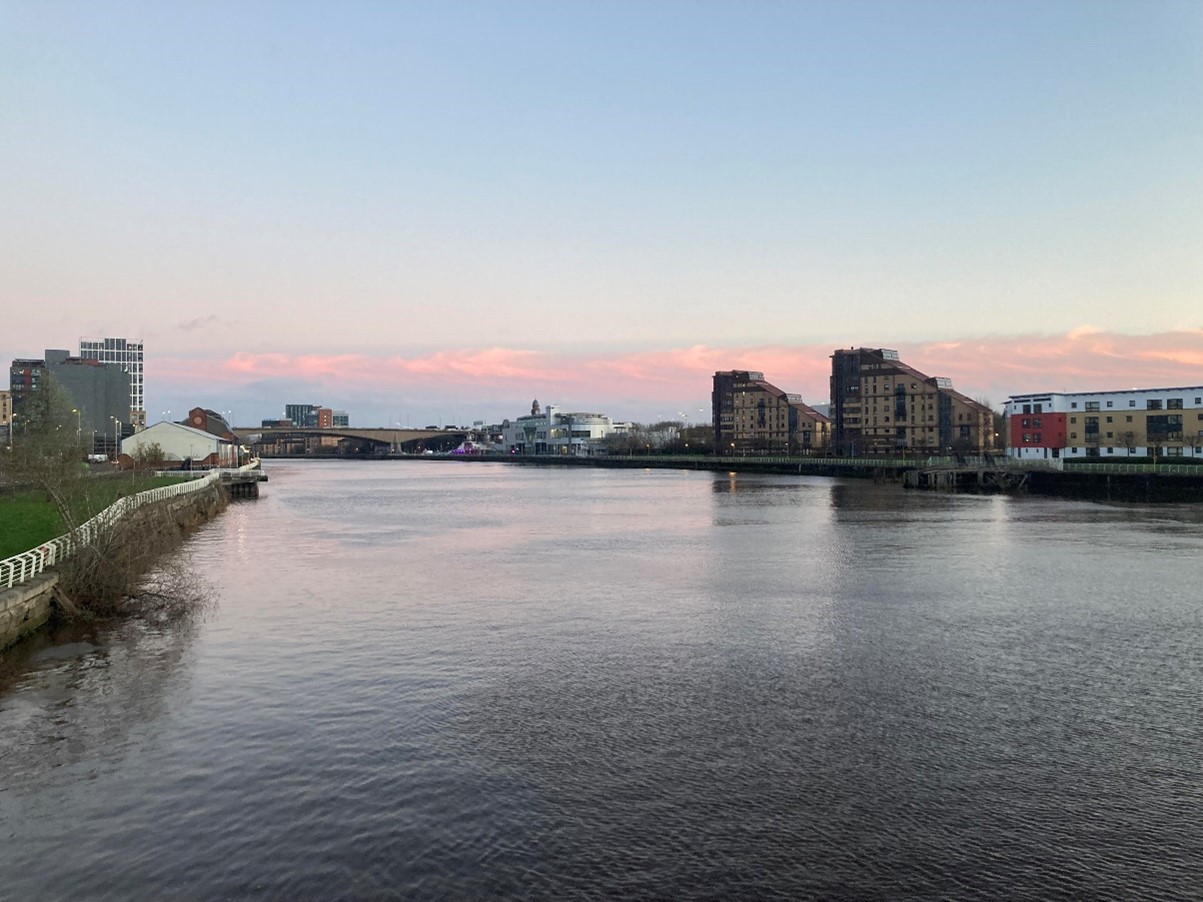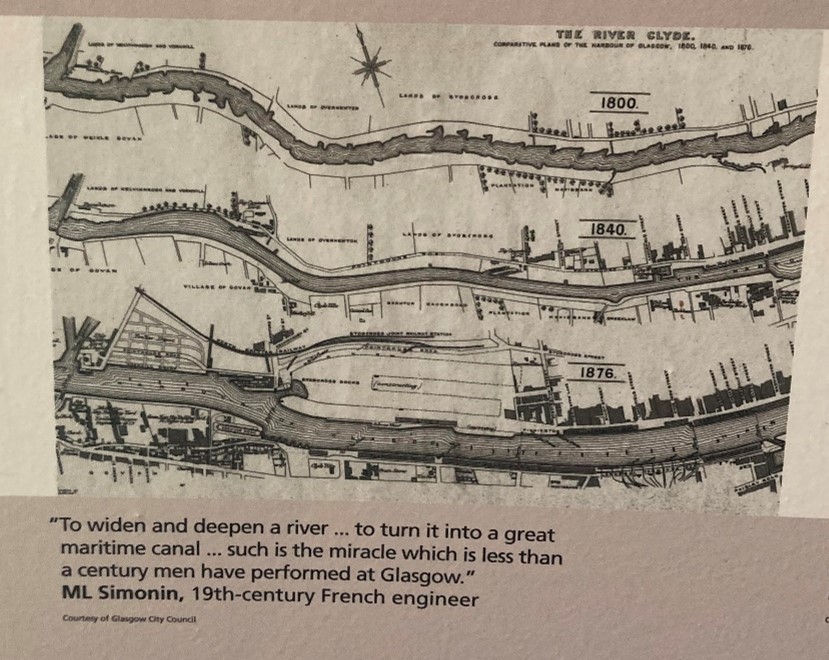
On a chilly morning in mid-November, I set out on the long drive towards Glasgow. Armed with podcasts and playlists and filled with excitement and copious amounts of coffee I was ready to tackle the 8-hour drive. A fortunately uneventful journey meant that after a quick stop at Tebay services, by far the nicest service station I have ever seen, I arrived in Glasgow late afternoon. Quickly dumping my bags at the hotel, I went in search of food, explored the city centre, and marvelled at the Christmas lights.
Waking up bright and early the next day, I was advised to explore the Clyde and get a feel for the study site. With beautiful blue skies the weather was deceptively cold, wrapping up warm I went for a wander along the waterfront. Passing by old dry docks, a reminder to Glasgow’s impressive industrial might, I arrived at the Riverside Museum; a museum dedicated to transport and technology, highlighting the role Glasgow played in shaping the world of engineering. The museum, while being lovely and warm, was also incredibly useful for my project. Glasgow, like many riverside cities, has relied heavily on the Clyde River for industry and trade, as such the river has been subject to numerous engineering projects to optimise the commercial exploits of the city. In order to effectively investigate how flooding in the Clyde has changed over time, it is essential to understand the morphological changes of the Clyde, however, I did not fully appreciate the scale of these changes until visiting the museum.
The following day I headed to Perth for a meeting with the flood risk assessment teams in SEPA. It was fantastic to meet such a dedicated and enthusiastic group of people all involved in keeping Scotland safe from every kind of flood risk imaginable. It was also extremely interesting to hear what projects were developing all round Scotland and to take time to appreciate the amount of arduous work that goes into ensuring the public are aware and protected from future floods.

Heading into the Glasgow office was an incredible learning experience. Having chats about community engagement, flood forecasting and warning procedures, flood mapping and modelling, I felt like my head was going to explode from all the information. It was particularly interesting to be shown the procedures for flood warning especially as storm Bert was on the horizon. Seeing how the flood warning officers decide when to alert local authorities was fascinating, albeit a bit nerve racking when realising how much pressure must be associated with the role. As well as the flood warning procedures I also had the opportunity to learn how SEPA interacts with local communities, understanding that communication is essential to minimise flood risks. Over the course of several days, I was able to learn so much about SEPA thanks to all the wonderful people in the office who I look forward to seeing again in the new year.
I am extremely grateful to SEPA for firstly organising the placement but also putting me in contact with expert modelers from industry and the university of Glasgow who I was able to have meetings with. Discussing the strengths and weaknesses of the current models and how important historic data was for improving reliability and minimising uncertainties at more locations along the Clyde. It was also incredible to have a chance to meet Glasgow City Council and discuss how important the collection of historic data is for them. With vast areas of land currently in disuse along the Clyde as the ship building industry has closed, there is a drive to develop these areas to provide more people with homes and enhance communities with access to the waterfront. Although a fantastic idea, a lot of work is still required; top of this list is assessing the risk of flooding. The historic records from the Clyde offer a unique insight into past flooding events and can help improve flood predictions and modelling. As a result Glasgow council are very keen to gather as much data as possible to speed up the development process.
The Hunterian museum is another fantastic museum in Glasgow, where the curators have spent the last decade collecting and categorising scientific artifacts. I was lucky enough to have a tour of the museum storerooms which were incredible. Seeing equipment and experiments, which I had only seen in textbooks, in real life was amazing, however, my personal favourite was the historic tide gauges, obviously there is no bias involved. Seeing the very instruments that were responsible for continuously recording data, which is now invaluable, from the 1800’s was phenomenal.
Spending time in Glasgow was an incredible experience and one I look forward to doing again in the future. Getting the opportunity to not only talk about my project with experts in field but also to learn about SEPA and Glasgow in a much broader sense has been invaluable. It was also fantastic to meet so many kind and interesting people who took time out of their busy schedules to explain things to me and I am extremely grateful to all who did so and cannot wait to see them again on the next placement.



